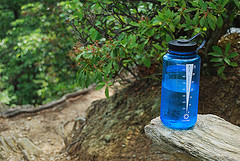Safe Drinking Water Tips for Travelers
13 April 2012
Waterborne diseases are a real risk for international travelers visiting countries with less-than-adequate sanitation and for travelers headed away from civilization and off the beaten path, i.e., those who will be hiking, camping, kayaking, and more.
While bottled water has become the convenient solution for many travelers, it may not always be available.
All international travelers, long-term expats, and those planning remote trips should become familiar with and use safety precautions to ensure the water they are drinking and brushing their teeth with is safe.
This isn’t a beer commercial
While the water flowing in the streams and rivers where you are hiking or camping looks pure and fresh, it’s not. In fact, it is likely to be contaminated with such tasty treats as bacteria (think Salmonella and E. coli), viruses (think hepatitis A and rotavirus), and parasites (think Giardia and Cryptosporidium).
There are many disinfecting methods
Besides applying heat, which we’ll talk about in a minute, travelers have these disinfection methods:
- Filtration – water filtration systems use a variety of methods. When combined with chemicals, water filters can be quite effective.
- Chemicals – the most common chemical disinfectants are chlorine and iodine. Globally, chemical disinfection is commonly used to improve the quality of drinking water, and both chemicals are available in tablet form. *
- Ultraviolet (UV) Light – becoming a very common travel accessory, a battery-operated UV light unit delivers a timed dose as an effective way to disinfect small quantities of water.
* Water that has been disinfected with iodine is NOT recommended for pregnant women, people with thyroid problems, those with known hypersensitivity to iodine, or for continuous use.
Each disinfecting method has its drawbacks
Unfortunately, each of the methods above has its own drawbacks:
- The key to filter systems is the size of the filter pores – that’s the primary determinant of a filter’s effectiveness. Plus, you have to carefully follow the manufacturer’s instructions. The relatively high price and slow output of some units, however, may be prohibitive to some travelers.
- Water that is chemically treated doesn’t taste great and some waterborne parasites are unaffected by the chemicals used to disinfect the water. Water treated with iodine should be used only in limited quantities – for emergency use – and not by pregnant women or those with thyroid problems.
- UV light treatment is effective only in small amounts and not with water that is cloudy with a significant level of suspended solids.
In many cases, combining filtration with chemicals comes the closest to the best method of water disinfection.
The Best Method is Boiling it
There are a number of water treatment methods that will remove some or all of the protozoa and pathogens in water, but the very best method is boiling it. This because it is the only easily recognizable condition that doesn’t require a thermometer.
Water should be brought to a full rolling boil and kept boiling for over a minute. At altitudes higher than 6,500 feet (or 2,000 meters), the water should be boiled for a full three minutes. Let it cool and it’s safe to drink.
Of course, once you’ve boiled it, you have to keep it safely stored or it can become recontaminated.
For more information, see the CDC’s Guide to Drinking Water Treatment and Sanitation for Backcountry & Travel Use
Damian Tysdal is the founder of CoverTrip, and is a licensed agent for travel insurance (MA 1883287). He believes travel insurance should be easier to understand, and started the first travel insurance blog in 2006.

